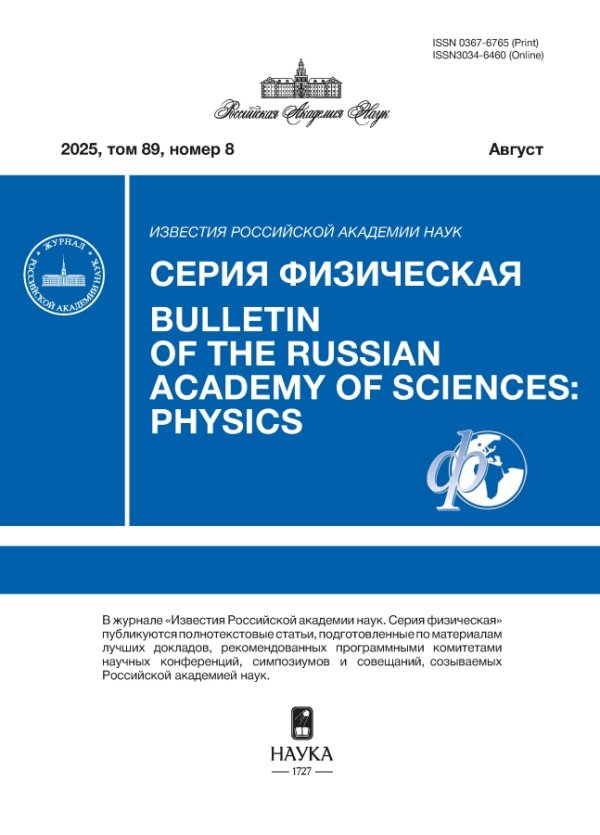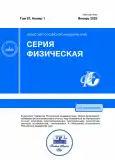Analysis of cognitive load in the Sternberg problem: eye-tracker study
- Authors: Brusinsky N.A.1, Badarin A.A.1,2, Andreev A.V.1,2, Antipov V.M.1,2, Kurkin S.A.1,2, Hramov A.E.1,2
-
Affiliations:
- Immanuil Kant Baltic Federal University, Center for Neurotechnology and Machine Learning
- Innopolis University, Neuroscience and Cognitive Technology Laboratory
- Issue: Vol 87, No 1 (2023)
- Pages: 125-128
- Section: Articles
- URL: https://journals.rcsi.science/0367-6765/article/view/135260
- DOI: https://doi.org/10.31857/S0367676522700235
- EDN: https://elibrary.ru/JUNVSW
- ID: 135260
Cite item
Full Text
Abstract
We studied physiological and behavioral characteristics of a person during prolonged solution of a cognitive task based on Sternberg paradigm. We found that evaluation of subjective fatigue and physiological characteristics such as blink duration and pupil size range of motion during the task solution are correlated to each other.
About the authors
N. A. Brusinsky
Immanuil Kant Baltic Federal University, Center for Neurotechnology and Machine Learning
Author for correspondence.
Email: nikita@brusinskii.ru
Russia, 236041, Kaliningrad
A. A. Badarin
Immanuil Kant Baltic Federal University, Center for Neurotechnology and Machine Learning; Innopolis University, Neuroscience and Cognitive Technology Laboratory
Email: nikita@brusinskii.ru
Russia, 236041, Kaliningrad; Russia, 420500, Innopolis
A. V. Andreev
Immanuil Kant Baltic Federal University, Center for Neurotechnology and Machine Learning; Innopolis University, Neuroscience and Cognitive Technology Laboratory
Email: nikita@brusinskii.ru
Russia, 236041, Kaliningrad; Russia, 420500, Innopolis
V. M. Antipov
Immanuil Kant Baltic Federal University, Center for Neurotechnology and Machine Learning; Innopolis University, Neuroscience and Cognitive Technology Laboratory
Email: nikita@brusinskii.ru
Russia, 236041, Kaliningrad; Russia, 420500, Innopolis
S. A. Kurkin
Immanuil Kant Baltic Federal University, Center for Neurotechnology and Machine Learning; Innopolis University, Neuroscience and Cognitive Technology Laboratory
Email: nikita@brusinskii.ru
Russia, 236041, Kaliningrad; Russia, 420500, Innopolis
A. E. Hramov
Immanuil Kant Baltic Federal University, Center for Neurotechnology and Machine Learning; Innopolis University, Neuroscience and Cognitive Technology Laboratory
Email: nikita@brusinskii.ru
Russia, 236041, Kaliningrad; Russia, 420500, Innopolis
References
- Hramov A.E., Maksimenko V.A., Pisarchik A.N. // Phys. Reports. 2021. V. 918. P. 1.
- Maksimenko V., Khorev V., Grubov V. et al. // Proc. SPIE. 2020. V. 11459. Art. No. 1145903.
- Badarin A.A., Antipov V.M., Grubov V.V. et al. // Comput. Biophys. Nanobiophoton. 2022. V. 12 194. P. 142.
- Бадарин А.А., Грубов В.В., Андреев А.В. и др. // Изв. вузв. Прикл. нелин. динам. 2022. Т. 30. № 1. С. 96.
- Hessels R.S., Hooge I.T. // Dev. Cogn. Neurosci. 2019. V. 40. Art. No. 100710.
- Schweitzer R., Rolfs M. // Sci. Adv. 2021. V. 7 Art. No. 30.
- Bryc M., Murali S., Händel B. // Front. Psychol. 2021. V. 12. Art. No. 647256.
- Poli F., Serino G., Mars R.B., Hunnius S. // Sci. Adv. 2020. V. 6. No. 39. Art. No. eabb5053.
- Lee K.A., Hicks G., Nino-Murcia G. // Psychiatry Res. 1991. V. 36. No. 3. P. 291.
- Klabes J., Babilon S., Zandi B. et al. // Vision. 2021. V. 5. P. 21.
- Bakdash J.Z., Marusich L.R. // Front. Psychol. 2017. V. 8. P. 456.
- Zargari Marandi R., Madeleine P., Omland Ø. et al. // Sci. Reports. 2018. V. 8. Art. No. 13148.
Supplementary files













